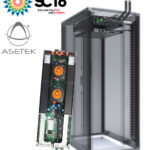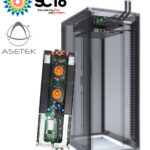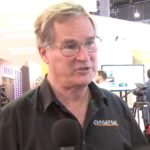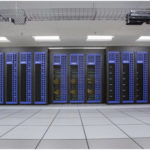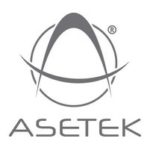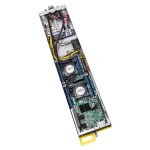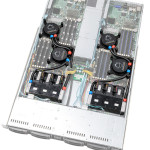“With the accelerating trend of higher wattages and the continuing requirement of high density, the need for adaptable, cost effective, and reliable liquid cooling is accelerating among those striving to obtain TOP500 status,” said John Hamill, Vice President of WW Sales and Marketing. “This need is exactly what Asetek’s distributed cooling architecture provides.”
Asetek’s Adaptable Liquid Cooling on Display at SC16
Demonstrating Asetek’s adaptability to any data center cooling need, HPC installations from around the world are currently on display at SC16 in Salt Lake City, Utah November 14-17. Servers from these installations featuring Asetek liquid cooling will be on display including servers installed at Oakforest-PACS, the highest Performance Supercomputer System in Japan.
Datacenter Efficiencies Through Innovative Cooling
Datacenters that are designed for High Performance Computing (HPC) applications are more difficult to design and construct than those that are designed for more basic enterprise applications. Organizations that are creating these datacenters need to be aware of, and design for systems that are expected to run at their maximum or near maximum performance for the lifecycle of the servers.
Making it Easy to Introduce Liquid Cooling to the Data Center
With the release of high wattage processors liquid cooling is becoming a necessity for HPC data centers. Liquid cooling’s ability to provide the direct removal of heat from these high wattage components within the servers is well established. However, there are sometimes concerns from facilities management that need to be addressed prior to liquid cooling’s introduction to the data center.
Video: Asetek Showcases Liquid Cooling at ISC 2016
In this video from ISC 2016, Steve Branton from Asetek describes the company’s innovative liquid cooling solutions for HPC. “Because liquid is 4,000 times better at storing and transferring heat than air, Asetek’s solutions provide immediate and measurable benefits to large and small data centers alike. RackCDU D2C is a “free cooling” solution that captures between 60% and 80% of server heat, reducing data center cooling cost by over 50% and allowing 2.5x-5x increases in data center server density. D2C removes heat from CPUs, GPUs, memory modules within servers using water as hot as 40°C (105°F), eliminating the need for chilling to cool these components.”
Asetek Demonstrates Leadership with Recent Global Installations
Sandia National Laboratories has already seen the benefits from a major Asetek liquid cooled HPC system that has been in use for over twelve months. The 600 teraflop Sky Bridge Supercomputer with 1,848 nodes was installed using Asetek D2C in a Cray CS300-LC supercomputer cluster. With RackCDU D2C, air heat-load was cut by more than 70%, making mechanical upgrade of data center cooling unnecessary and allowing more investment in compute.
Asetek to Premier VerticalRackCDU Liquid Cooling at ISC 2016
Today Asetek announced plans to showcase its liquid cooling solutions and successful installations at ISC 2016 in Frankfurt. “For the first time, Asetek will be displaying its new InRackCDU cooling solution. InRackCDU provides the option of having RackCDU mounted in the server rack. InRackCDU does not take up aisle space and includes the same monitoring features as Asetek’s VerticalRackCDU.”
Asetek to Showcase Liquid Cooling at ISC 2016
Asetek will highlight its liquid cooling solutions and successful installations at ISC 2016 next week in Frankfurt. For the first time, Asetek will be displaying its new InRackCDU cooling solution. InRackCDU provides the option of having RackCDU mounted in the server rack. InRackCDU does not take up aisle space and includes the same monitoring features as Asetek’s VerticalRackCDU.
Cooling Today’s Hot New Processors
Expected later in 2016, Intel will be releasing production versions of its Knights Landing (KNL) 72-core coprocessor. These next generation coprocessors are impacting the physical design of the supercomputers now coming down the pike in a number of ways. One of the most dramatic changes is the significant increase in cooling requirements – these are high wattage chips that run very hot and present some interesting engineering challenges for systems designers.
Enhanced Air Cooling with Internal Loop
Although liquid cooling is considered by many to be the future for data centers, the fact remains that there are some who do not yet need to make a full transformation to liquid cooling. Others are restricted until the next budget cycle. Whatever the reason, new technologies like Internal Loop are more affordable than liquid cooling and can replaces less efficient air coolers. This enables HPC data centers to still utilize the highest performing CPUs and GPUs.

